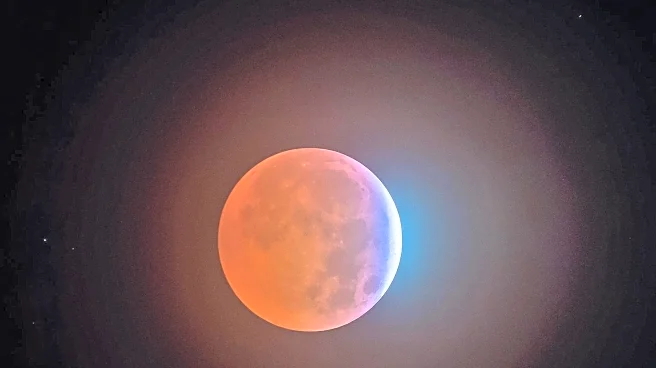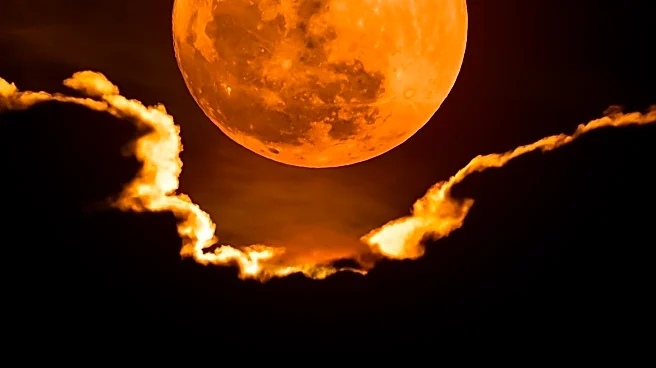What's Happening?
The full Harvest Supermoon, the first of three supermoons to end the year, lit up the night sky on October 6, 2025. This astronomical event was visible across the world, with photographers capturing its brilliance. The supermoon occurs when the moon is at its closest point to Earth, known as perigee, during its elliptical orbit. This proximity made the moon appear 14% larger and 30% brighter than a typical full moon. The event also coincided with a King Tide, causing coastal and river flooding from Florida to the Carolinas. The supermoon was visible from various iconic locations, including the Statue of Liberty in New York City.
Why It's Important?
The Harvest Supermoon is a significant event for both scientific and cultural reasons. It provides a unique opportunity for public engagement with astronomy, as the increased size and brightness of the moon are easily observable. The event also highlights the moon's influence on Earth's tides, with the King Tide causing notable flooding in southeastern U.S. regions. This serves as a reminder of the potential impacts of celestial events on human activities and infrastructure. The supermoon also coincided with cultural celebrations, such as China's Mid-Autumn Festival, emphasizing its global cultural significance.
What's Next?
Following this supermoon, additional supermoons are expected in the coming months, providing further opportunities for observation and study. These events may prompt increased interest in astronomy and related fields, as well as discussions on the impacts of celestial phenomena on Earth's environment. Coastal communities may need to prepare for potential flooding associated with future supermoons and King Tides. The continued occurrence of supermoons could also inspire educational initiatives and public outreach to raise awareness about the moon's role in Earth's natural systems.
Beyond the Headlines
The Harvest Supermoon underscores the importance of understanding natural cycles and their effects on human life. It highlights the need for preparedness in coastal regions vulnerable to flooding and the potential for increased public interest in science and astronomy. The event also serves as a cultural touchstone, connecting people across the globe through shared experiences of natural beauty and wonder. As interest in celestial events grows, they may inspire future generations to pursue scientific exploration and contribute to our understanding of the universe.










